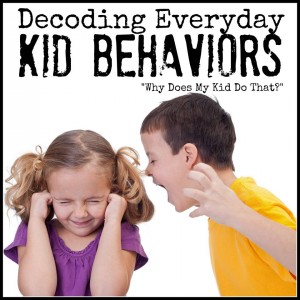As an art teacher I taught over 1,000 students each week. With teaching so many students I saw many different learning styles and abilities. When I first heard about Lemon Lime Adventure’s Decoding behavior series for Sensory Awareness month, I knew I had to share the story of one of my students who I will refer to as Johnny.
As the art teacher I got the pleasure of watching students grow from year to year. With Johnny, I witnessed a transformation from a struggling disruptive student to an engaged learner with a new love to read.
Here is Johnny’s story (student name has been changed).
![]()
Johnny was disruptive in the classroom and had been diagnosed ADHD. He was a struggling reader, reading well below his grade level. His vision had been screened and he had 20/20 vision. However after his classroom teacher noticed he relied on his finger to keep his place and would continually mix up words his parents did additional testing. It was discovered he had visual eye tracking problems.
Eye tracking — the ability to keep the eyes on target when looking from one object to another, like following a thrown ball. It is how we control our eyes.
Johnny and his parents (along with the help of all his teachers too) worked with his doctor and occupational therapist and improved his eye tracking. Not only did his reading improve but so did his behavior. Eye tracking is an easily missed diagnosis but is a skill that can be improved with simple eye exercises. Be sure to seek a diagnosis and follow the treatment plan from your medical doctor.
However….even if your child does NOT have a visual tracking problem, all children can benefit from strengthening their eyes.
Today more children need help with eye tracking as typical children spend more time inside rather than playing outside. Children are also exposed to more screen time than previous generations. This has led to more children not developing the visual eye strength they need to be successful in school and sports.
Here are a few ways you can strengthen your child’s eye tracking
(once again, please remember I am not a doctor. Please discuss any medical concerns or treatments with your child’s doctor and/or therapist).
Drawing and Painting
Puzzles
Dot to Dot Pictures
Mazes
I Spy Games
Hidden Picture Games
Flashlight Tag
While every child may not have the extreme reaction such as Johnny’s story, every child can benefit from eye tracking exercises. I am sharing Johnny’s story in case it even helps one parent find a solution for their child.
Please note, I am not a doctor or a therapist. If you have vision concerns please address with your child’s doctor and/or therapist.
To learn more about visual sensory be sure to check out Lemon Lime Adventures’s post on Sensory Processing, All Thing Visual. She has more in depth information and a great cheat sheet on visual behaviors.
This post is a part of the Decoding Everyday Behaviors Blog Hop. Click over to find more information on Sensory processing for children.
Want to learn more about Sensory issues and how you can help your child or help a whole classroom?
Be sure to check out Project Sensory.
“The main mission of Project Sensory is to make “sensory” an everyday word. To get the right tools into the hands of ALL children to help them be successful. We want to educate and support parents, educators, and caregivers as they help their children meet their sensory needs”.
Can you imagine if Johnny had not received the help he needed? He would have been a frustrated reader his entire school career. Luckily for him he did receive the help. See how you can help support teachers and children with sensory needs.



There is a profession that has been trained to evaluate visual-learning problems. Developmental Optometrist begin as an Optometrist, but add additional training to thoroughly evaluate the visual system and offer lenses and/or training to remediate diagnosed problems. A general Optometrist usually does not have the time to evaluate tracking in a routine exam, but may refer when problems with reading or school are reported. In addition to tracking, there or over 20 additional skills that are critical for school and reading-convergence, vergence facility, accommodation, saccades, visualization, visual memory etc, etc. Please do not leave it up to a teacher or OT to recognize these problems. Make a proper referral to a Developmental Optometrist so that each child can reach his potential.
Oh, I agree a teacher should never diagnosis a medical problem. However in my 1o years experience as a teacher often times we are the ones that first notice when there is a problem with a student. That does not mean as the teacher we know what is the cause, open communication between home and school is the best way to find what is at the root of the problem and find the best possible solution for the student.
This article is not advice on how to diagnosis visual tracking but rather an awareness of a problem that might be overlooked. As I mentioned in the post my student and his family did work with a doctor. But you are right, there are many reasons why the student may be having trouble and a trained professional would be needed to make such a diagnosis.
Thank you for sharing your medical opinion. If you have any links with more information for a concerned parent I would be happy to add them to the post.
I am an occupational therapist and recently received a referral from a clinical psychologist for a child diagnosed with “NVLD.” The family had asked for testing due to his “distractibility” and struggling with learning to read. During my evaluation I tested the 3 critical areas for NVLD: motor, social, and visual spatial, while I suggested the child be tested by SLP for social pragmatics. The child tested average to above average in all areas, with the exception of visual memory during my visual perceptual testing. After further assessment I found the child struggled with scanning/tracking across midline, which would explain why he had tested poorly during his psychological testing and struggled with reading (he was missing information/not seeing all the information presented to him). He didn’t qualify for OT services due to the only deficit being his visual memory. I referred his family to a behavioral optometrist, and provided them with supplemental home programming to work on crossing midline and reading accommodations in the meantime. It was a great learning opportunity for me as a therapist, when I feel I could have addressed the issue after my investigation, but felt the behavioral optometrist would have been more appropriate/to the point and in addressing the family’s main concern.